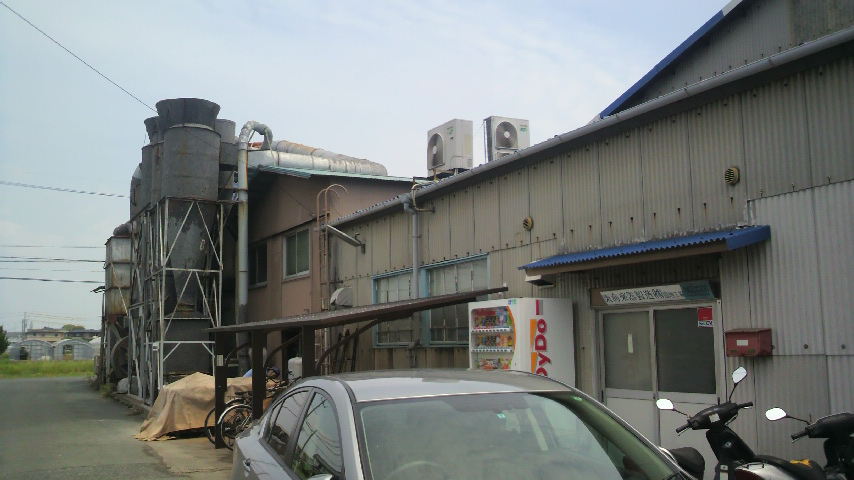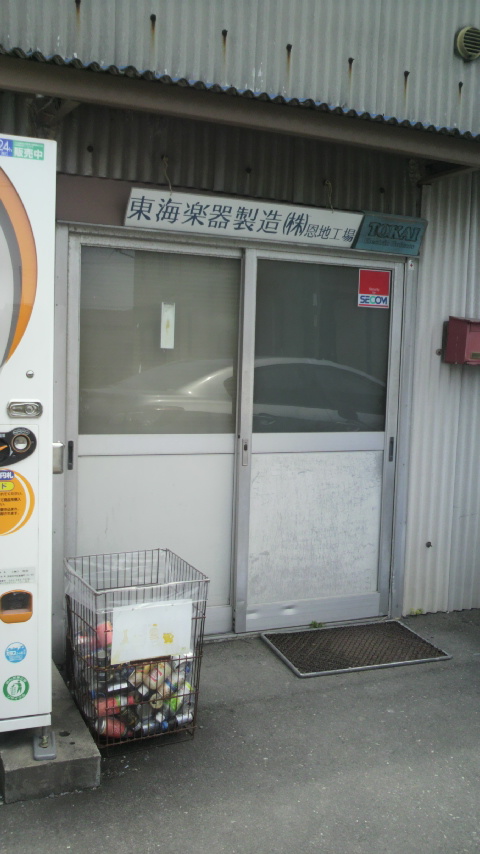Here is an article I shared a little while back by MODA in 2012. Includes some pics of the Dorm facility.
宮地楽器 神田店
Lightweight!
TOKAI SUPER SHOP MODEL
Miyaji musical instrument order completed.
This article was written on Friday, February 01, 2013.
Hello everyone. It's been another month in 2013, and there are only 11 months left, but how are you all doing? As we have already announced to those who have read this blog, I am producing a guitar that is particular about materials as
TOKAI SUPER SHOP, but I will inform you this time. Masu is a FENDER system. It's a challenge to a custom shop, not the Gibson style such as the 335 style and Les Paul so far.
The material was actually selected in Hamamatsu in late September 2012, when the heat still remains. It is a problem to always ask the staff of Tokai Musical Instruments who inevitably work in a factory where the heat is harsh. On that summer day, I heard that there was a lightweight one-piece ash and a straight-grained neck, and vowed to produce a guitar that made full use of the goodness of the material. When I recall, it actually took 4 months to complete. With the finished product in front of you, I am impressed.
When making this kind of guitar, the weight could be assumed as a numerical value at the stage of conception, but no matter how much experience it has gained. However, I don't understand anything about the performance feeling until I get the actual instrument. This is a difficult place to order a shop. Create a prototype and repeat trial and error Unlike ready-made products that are commercialized, it is a real game.
By the way, the feeling of crossing expectations and anxieties when unpacking the guitar I was involved in producing became middle-aged. It gives a slight fever and a feeling of excitement to me, but if it goes too far, it will not be excitement. There is a great possibility that you will become a god of guitar, or even a Buddha, due to myocardial infarction. Cool, Objectively confront the finished product.
The moment I picked it up, I opened the box and checked what kind of guitar was made from the outside ... "Light !!!!" The biggest feature of this guitar, "lightness", that you can experience before checking the grip feel and appearance of the neck. Yes, one of the goals was a lightweight guitar. That summer day when I selected the materials. The first stage has passed. Then, when you play it down raw with Jalan, the vibration is transmitted from corner to corner of the lightweight body, and the balance is perfect. A few minutes to enjoy the live sound without going through the amplifier for a while. The solid middle sound that comes from the texture of the straight neck is so great that you can feel the sound even with your left hand. Naturally, the ash body, which has a good sound that is directly transmitted to your belly, makes the overall total balance feel even closer to VINTAGE. And finally plugged into the amp. Since I was convinced that the material was good this time, I did not specify the pickup in particular (I considered replacing the pickup I like later and to keep the selling price down), I left it to Mr. TOKAI, but it is really Matchon. Good TWANG sound. The genuine TOKAI pickup does not have a strange habit, but rather it seems to output the goodness of the material obediently, which can be said to be a miscalculation. It's more than you can imagine, it's more than you can imagine. The materials and parts are specified in the specifications, but is it a business that can make a passion for making guitars with attention to detail? A polite work that does not make you feel any compromise even if you look closely. The awesomeness that every detail of the part exists to create a single sound.
Total balance and neck feeling when playing, familiar with amps The wood that I saw in front of me at the factory, such as the goodness of the ash peculiar to when it was done The board of Npeace Ash and the maple neck material of the grain are the skills and processes of the people of the TOKAI factory with Japanese custom shops. We have opened our eyes as a musical instrument that has been beautifully completed by the staff. You can say it.
When a guitarist picks up a new guitar, a new guitar from there It is a common story that the story begins. But that At the beginning of the story, a lot of passion was added to this guitar. It is out in the world with a story. You also get this guitar and produce the continuation of the story Isn't it.
Please see this page for details.
Tokai HST-MIJ LTD ASH STW / M
Tokai HTE-MIJ LTD ASH STW / M
see you.
by Moda







































































